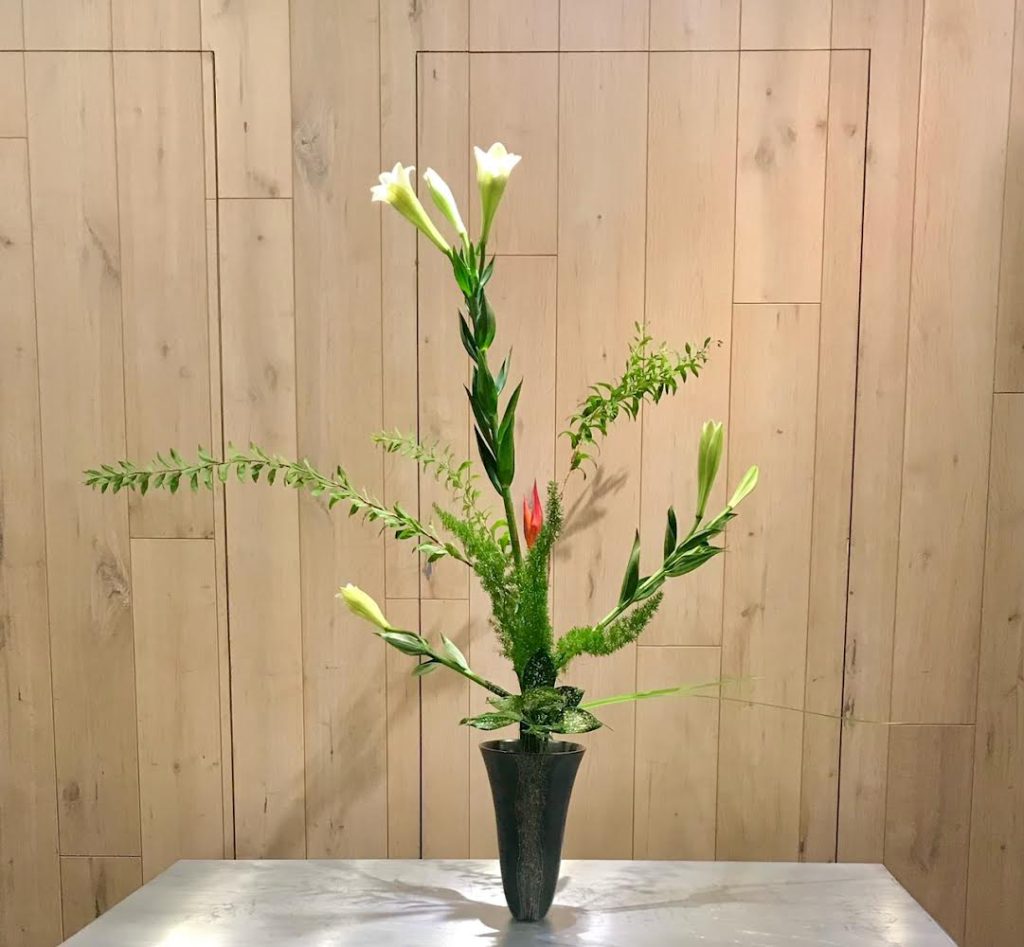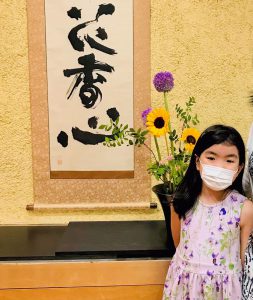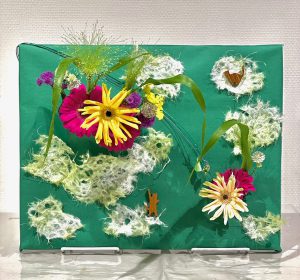Rikka style lesson
Rikka style lesson around the time between Shosho (monitor heat – the beginning of summer) to Taisho (big heat – the beginning of midsummer)
It was my 10th time to take a Rikka lesson today. Even though I struggled a lot to learn functions of each yakueda and their positioning, I have gradually understood them. Ikenobo ikebana has a history of over 500 years, and among its floral styles, Rikka is the oldest and most traditional. Hence, it may be regarded as the foundation of ikebana, and would be a magnificent and elegant style of “Kado (Flower Arrangement)”, an aspect of Japanese culture being well transmitting to the entire world.

In Rikka style, floral materials stand side by side, each playing its own role. A Rikka work represents an expansive landscape with minimal use of floral materials. Capturing a moment in infinity, it suggests the real significance of majestic nature.
Based upon this concept and traditional structure, I positioned Lily as shin and Heliconia as shoshin first, and then positioned other materials. One of the difficult parts for me always came just before completion of the work, which would be to position Asparagus Myers as do and Dracaena as maeoki respectively. Thanks to Mori-sense’s great teaching, I have gradually grown, but still have a lot of things to learn and need more practice.
Materials used:
Lily: Shin, Uke, Hikae
Thunberg spiraea: Soe, Mikoshi
Heliconia: Shoshin
Iris ochroleuca): Nagashi
Asparagus Myers: Do
Gold dust Dracaena: Maeoki
Takayuki Fujii


